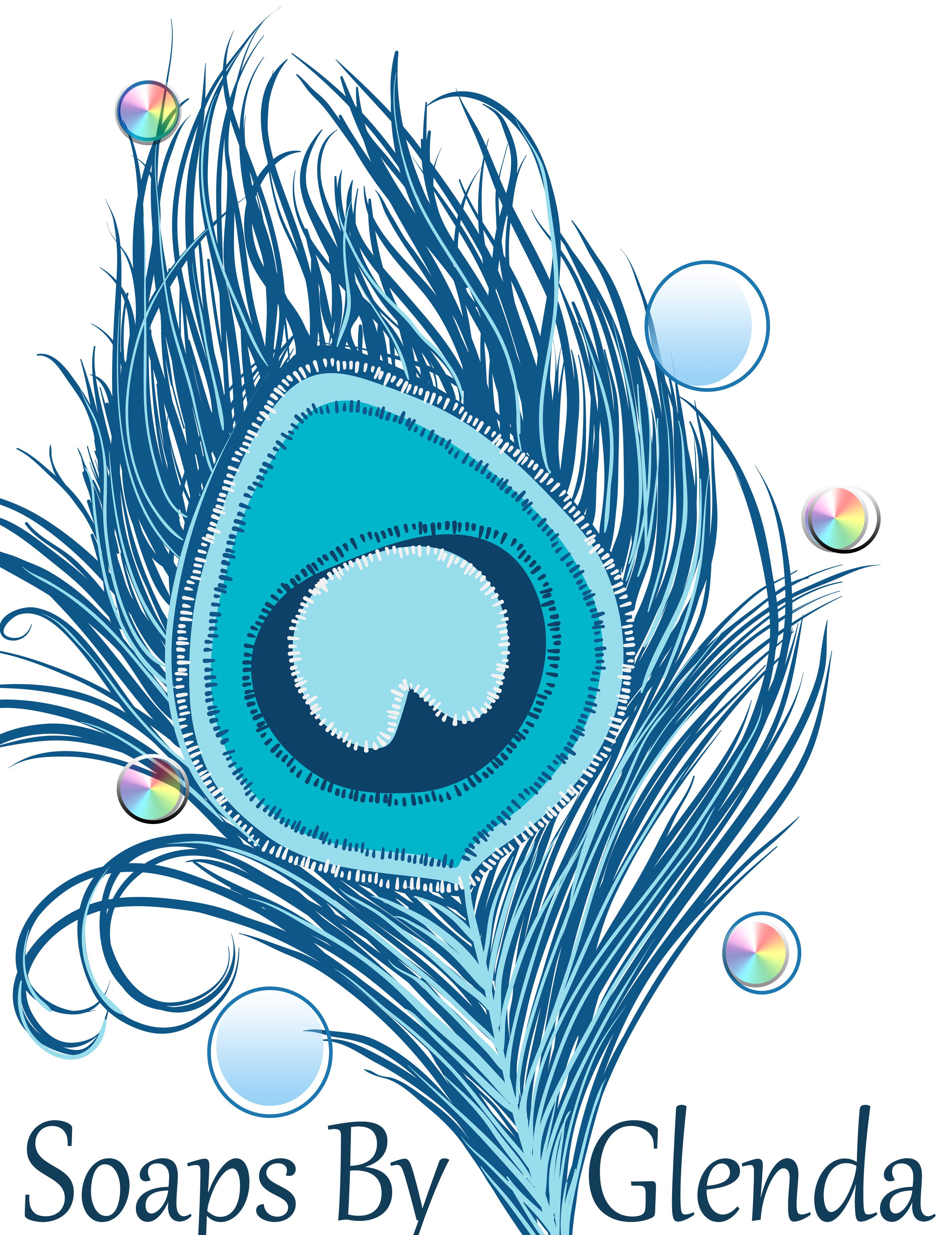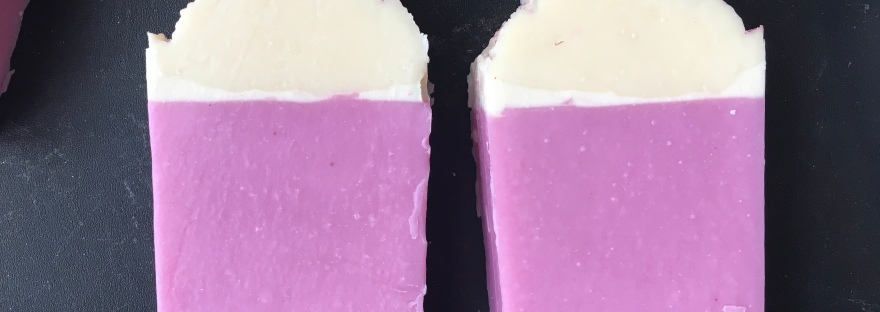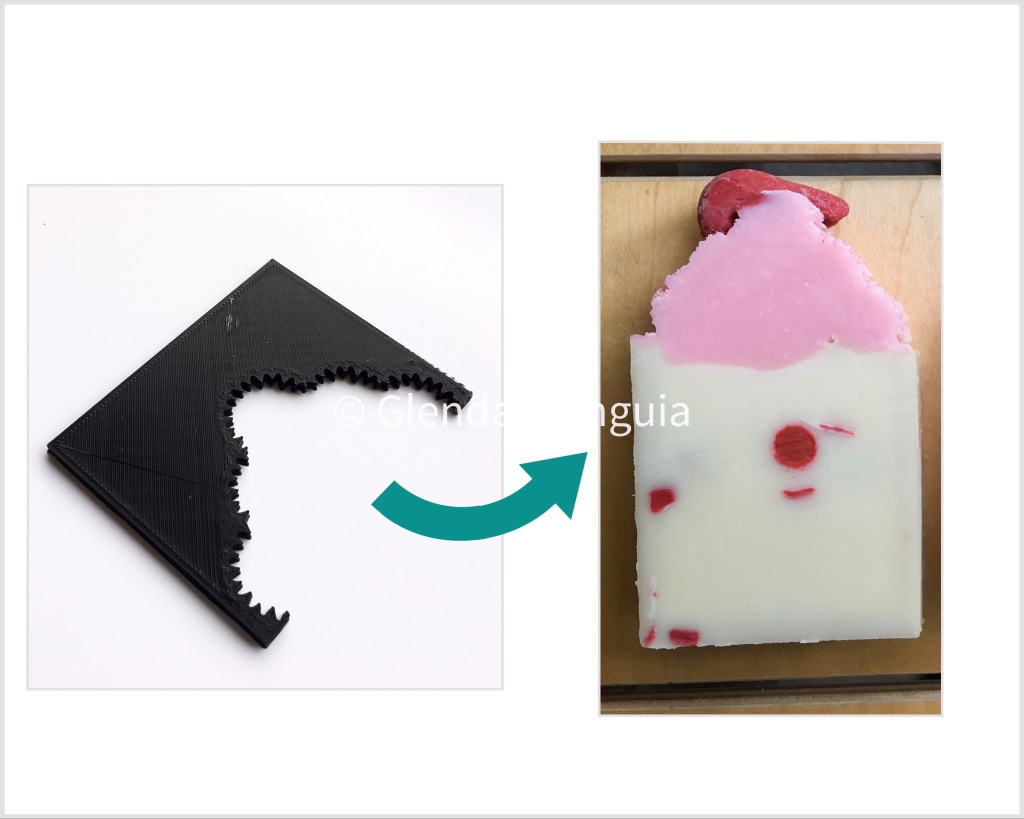
The first time I tried piping the top of my soaps, the process was very messy, but fun.
While my piping technique has improved slightly since, it is still a messy process for me. I often find I lack the patience or time to wait for the soap to be ready to be piped.
So, recently I thought of making a scraper instead, to see how it turned out and whether it would be faster.
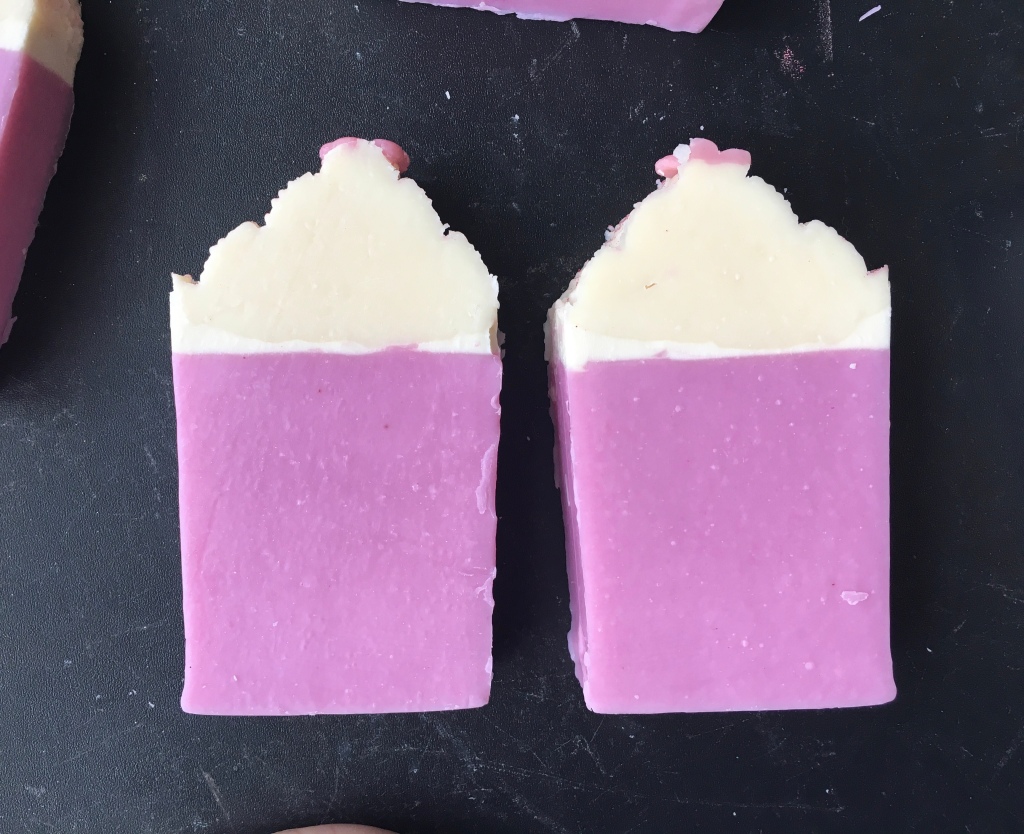
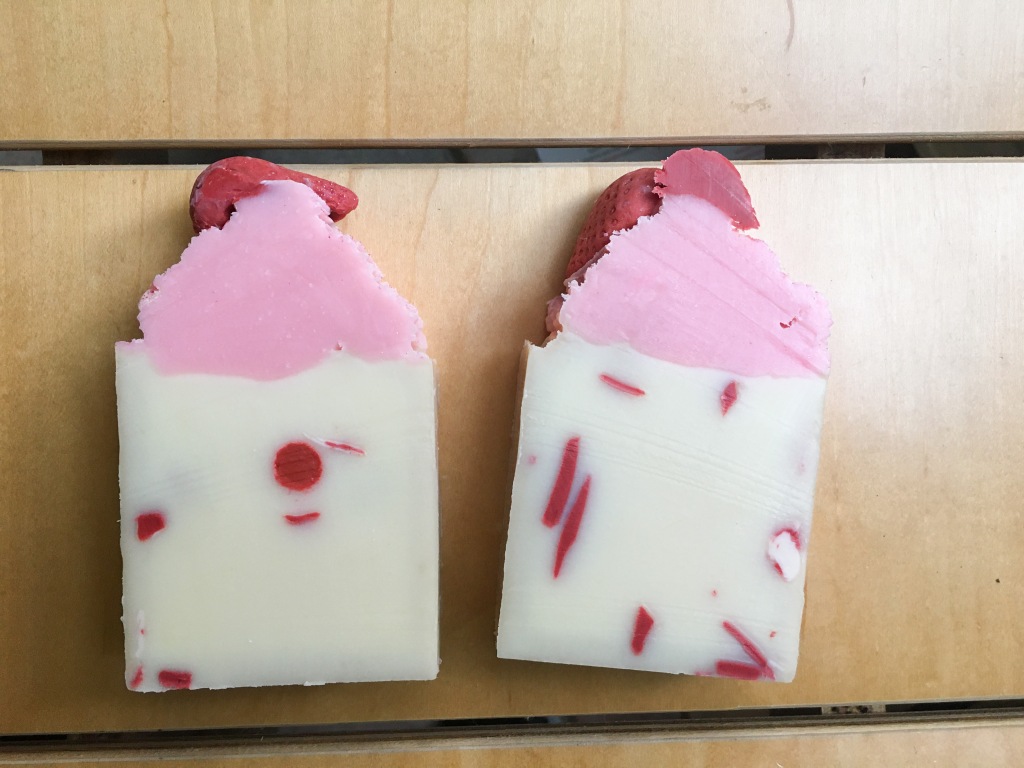
It looked like a failed experiment while making the soap, but once the bars were cut, I was gladly surprised. I used an accelerating fragrance so I did not have to wait too long for it to set up, though it did make me rush once it thickened. I may try a few more design ideas next.
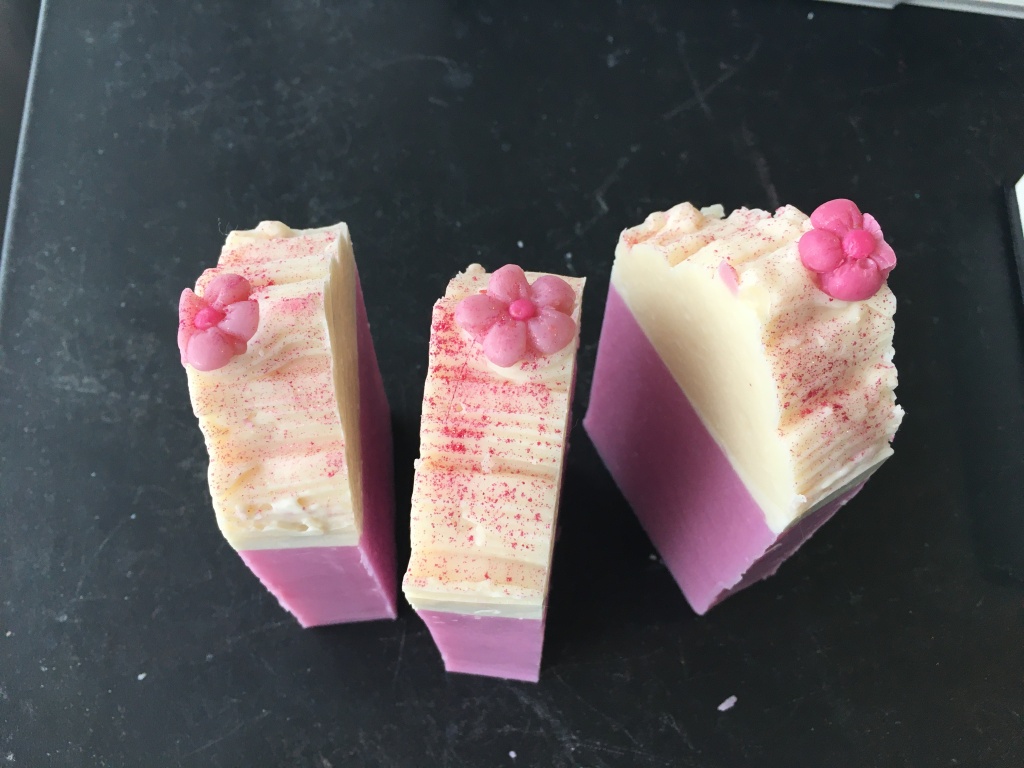
If you would like to purchase it, I listed it in my Etsy store here
Here is a short video I made:
This recipe sets up fast, you may want to increase your superfat % and water % for an easier to work with recipe.
Recipe for main soap
Water + Lye
7.67 oz Water
5.11 oz 99.20% Purity NaOH
Oils
8.28 oz Coconut Oil, 76 deg
2.16 oz Ricinus Oil (Castor Oil)
3.96 oz Karite Butter (Shea)
10.44 oz Olive Oil – All Grades
11.16 oz Lard
Fragrance:
50/50 of Chocolate Fragrance oil (New Direction aromatics) and Strawberry Fragrance oil from Wholesale supplies plus.
Recipe for the Top
Needed Ingredients
| Ingredient | Gram(s) | Ounce(s) | Pounds(s) | Oil % |
|---|---|---|---|---|
| Coconut Oil, 76 deg | 104.33 | 3.68 | 0.23 | 23% |
| Ricinus Oil (Castor Oil) | 27.22 | 0.96 | 0.06 | 6% |
| Karite Butter (Shea) | 49.90 | 1.76 | 0.11 | 11% |
| Olive Oil – All Grades | 131.54 | 4.64 | 0.29 | 29% |
| Lard | 140.61 | 4.96 | 0.31 | 31% |
| Ingredient | Gram(s) | Ounce(s) | Pounds(s) | Batch % |
| Lye – NaOH 99.2% Purity (3% Superfat) | 64.41 | 2.27 | 0.14 | 10.43% |
| Water (40% Lye + 60% Water Solution) | 96.61 | 3.41 | 0.21 | 15.64% |
| Total Oils | 453.59 | 16 | 1 | 73.45% |
| Soap Weight (Pre-Cook) | 617.59 | 21.78 | 1.36 | 100% |
Colorant:
A small amount, perhaps 1/4 tsp or so of Really red mica from Nurture Soap
Fragrance:
Equipment
- List of regular equipment
- Long and skinny spatulas
- This is a kit with several sculpting tools
- Scraper
Safety Equipment:
- Nitrile gloves
- Facial Shield (I use either a facial shield or the goggles below)
- Safety Goggles
- Respirator (I use this when mixing the lye, I mix the lye in the window sill, window opened, with a pedestal fan blowing the fumes away, better yet, freeze your distilled water prior) I also try to wear long sleeves, pants and closed shoes. In my personal experience, most of my near misses (when I feel my skin itching or a slight burning sensation), or when I come contact with the soap batter, have happened when I am wiping down the containers, when I am almost done.
Some concepts explained:
*SUPERFAT:
By now you probably know that lye (sodium hydroxide) converts oils into soap, through a process called saponification. And you probably also know that there are specific amounts needed of each for this to happen. Because each soap has a different SAPonification value, different amounts of lye are needed for each oil.
Superfatting sounds like something I like to do to myself when I keep eating after I feel full. But in the soap world, many will know it is when you either add more oils or less lye than it is required. Let’s say, hypothetically, that you need 3 oz of lye to convert 16 oz of manacao oil (totally made up oil) into soap. If you only use 2.5 oz of lye instead of 3, that means that a percentage of the manaco oil will not become soap, but will remain an oil. And this is desirable as that extra oil will cause the soap to become more gentle on your skin, by reducing its cleansing ability slightly. But if you use 4 oz of lye instead of 3, that means all 16 oz of manacao oil will become soap, and not only that, there will be extra lye floating around. That extra lye will be looking for more oil to convert to soap, that oil could be the natural skin oils, which means this soap can burn or irritate the skin.
Usually superfat of at least 3% is recommended as oils properties may change from crop to crop. But even if you had a 0% superfat soap, it would still be gentle as handmade soap creates glycerin, which is a skin humectant. (From most commercially produced soap, glycerin is removed to be sold separately).
*LYE CONCENTRATION / WATER DISCOUNT:
Most soap calculators will give you the amount of water needed to mix the lye with, based on traditional cooking methods of making soap, what we now know as hot process. This is a big percentage of water (38% of the oils) because a lot of it would evaporate through the cooking process. However, for cold process soap this is usually too much water, which can lead to a lot of soda ash or a lot of shrinkage during the cure.
This blogpost explains it better (from modern soapmaking).
